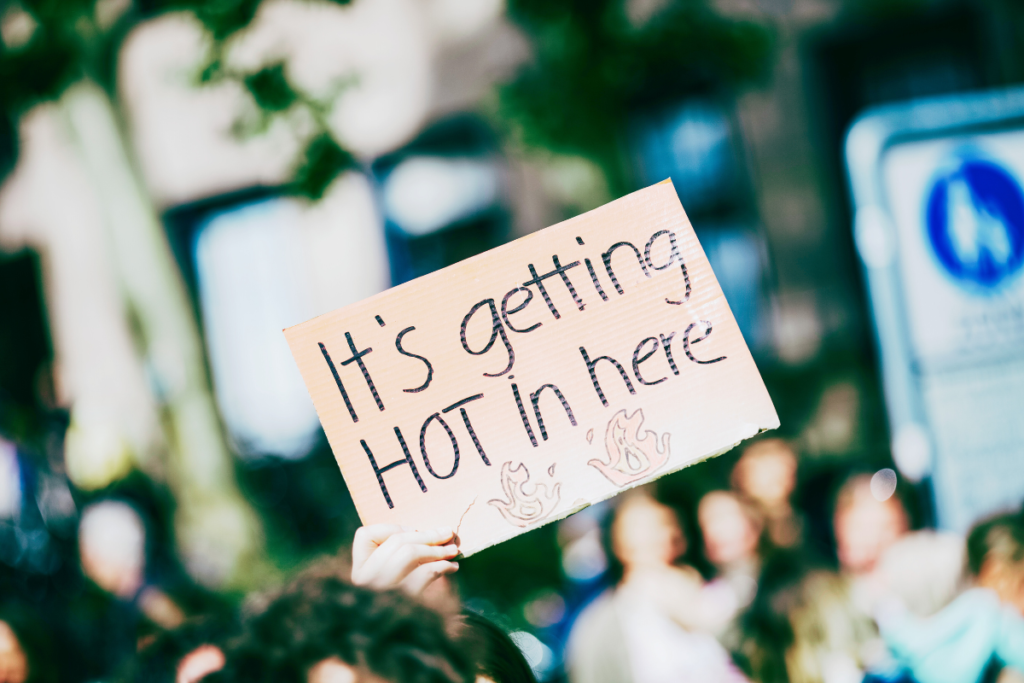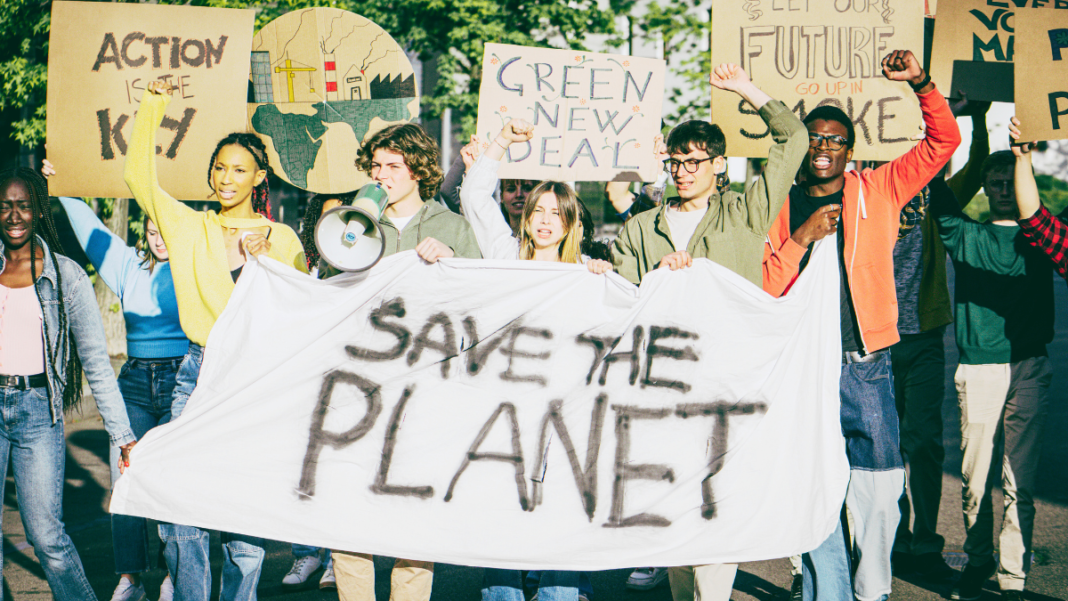When we hear the word Climate Change, only a minority of the people in the world take it seriously. Some are even making fun of it like it was nothing but old news from the past. What we don’t know is that as the days go by, the threat of this global phenomenon is getting beyond humanity’s reach. In this article, HTC News will take you on a ride like never before. In the end, you will have a clear grasp of what is going on on the planet that we live in.

(more HTC News General Topics)
We Were Warned!
It is in human nature to realize things when it is too late. Since the 19th century, scientists have warned us of the possible effects of greenhouse gasses due to man-made emissions. However, since the machinery and equipment were limited then, this hindered them from solidifying their theory.
Unsurprisingly, these warnings were largely ignored. People continued with their daily lives, oblivious to the ticking time bomb of greenhouse gas emissions. To compound the issue, the global population doubled, leading to a staggering increase in these emissions. The result? The onset of a global crisis we now know as Global Warming.
In 1990, the advancement of technology shed light on this matter and helped the researchers expand their understanding. They studied the present statistics and combined them with historical data, confirming that the climate is indeed changing. The Primary contributor? Greenhouse emissions from human activities.
The Difference Between Global Warming and Climate Change
Many of us are still confused about the difference between Global Warming and Climate Change.
Global Warming, a phenomenon that began between 1850 and 1900, is primarily a result of human activities. Our use of fossil fuels and other man-made pollutants significantly contributes to greenhouse emissions, leading to a rise in global temperatures.
On the other hand, climate Change is the abnormal rapid change of climate over the years caused by Global Warming. It includes temperature, precipitation, and wind patterns.
Today, Climate Change is very obvious. Calamities are getting harsher by the year. There are rains during summer, drought in winter, prolonged summer and rainy seasons, and many more. One good example of this is when Dubai, a dry country that receives an estimated rain of 3.12 inches per year, receives two years’ worth of rain within 24 hours. This is truly an eye-opener that Climate Change is a global threat.
Wildlife are Paying the Price
The greed of human beings worsens the rapid increase of Climate Change. Our race think that by being superior, we own the planet that we live on. Humans indeed became the strongest living beings on earth. Nothing can kill us anymore. We can cure sickness and diseases, and that has become a problem. We became seemingly unkillable, which resulted in overpopulation. Overpopulation resulted in an increase in pollution. Pollution resulted in the change of climate, and no matter how many times we are reminded to take action on this matter, we never learned. We never listen.
Now, wildlife is paying for our insolence. Due to the consistent increase in temperature, wildlife’s vegetation and water resources are affected. This has broken their ecosystem, forcing wildlife to migrate and move outside of their normal patterns in order to survive.
(Watch Our Planet by David Attenborough)
Next time you find yourself complaining about a hot afternoon, pause for a moment. Consider the sacrifices that our wildlife is making. They are forced to endure the consequences of our actions on this planet. Their struggle is real, and it’s time we acknowledge it.
Why is Climate Change a Global Threat?
The changing climate and the continuous increase in temperature greatly impact our environment. It is but a domino effect that only leads to a single outcome: an inhabitable planet.
A thriving ecosystem needs the participation of every living organism. It is a circle of life. We all rely on the balance of the chain for our food, shelter, and water. However, the change in our climate has broken the cycle, and if we don’t act now, there will soon be no more planet to save. It is a threat like no other because as nature can exist without humans, humans cannot exist without nature.
What We Can Do?
You don’t have to be a scientist to have an impact on our fight against climate change. As a matter of fact, changing simple things in our everyday lives can go way beyond our imagination.
Here are three simple things we can do to help:
1. Save as much energy at home as possible
Simply turn off appliances that are not in use. Electricity is powered by burning coal, gas, or oil, which contributes to greenhouse gasses.
2. Switch to wind or solar energy
If available, switch to electric companies that generate electricity primarily from wind and solar power.
3. Take a walk or use public transportation
Next time you’re heading somewhere nearby, consider walking or using public transportation. This simple choice can significantly reduce the greenhouse emissions produced by your car. By making this small change, you’re actively contributing to a cleaner, healthier environment.
4. Eat less meat
Eating more vegetables instead of meat will lower the carbon emission of meat producers that use machines to process their meat.
5. Learn to Recycle
Recycling can reduce factory production, emitting tons of greenhouse gasses yearly.
Speak Up and Act Now!
Your voice alone can have a great impact on saving our planet in this global threat. Encourage and inform others on the effects of this phenomenon. Climate Change is not a laughing matter. Our future depends on it. Speak up and act now before everything is too late.
Frequently Asked Questions About Climate Change
What is the difference between Global Warming and Climate Change?
Global Warming refers to the growth of the Earth’s standard surface temperature due to rising levels of greenhouse gasses from human activities, primarily since the late 19th century. Climate Change encompasses the broader range of changes resulting from global Warming, including shifts in weather patterns, precipitation, and wind patterns. It manifests in more extreme weather events, such as harsher storms, unusual rainfall patterns, and prolonged seasons.
How has human activity contributed to Climate Change?
Human affairs, mainly burning fossil fuels like coal, oil, and gas, have significantly increased the concentration of greenhouse gasses in the atmosphere. This increase has started accelerating since the Industrial Revolution. The rise in emissions has led to a warming effect, causing the global climate to change. Overpopulation, deforestation, and pollution contribute to these emissions, further exacerbating the problem.
Why is Climate Change considered a global threat?
Climate Change poses a global threat because it disrupts natural ecosystems and the delicate balance needed for life on Earth. It affects food security, water resources, and human health, making the planet less habitable. The changes in climate can lead to severe weather events, loss of biodiversity, and displacement of human and wildlife populations, ultimately threatening our survival.
What impact does Climate Change have on wildlife?
Climate Change significantly affects wildlife by altering their natural habitats. increasing temperatures and changing precipitation patterns disrupt ecosystems, forcing animals to migrate and adapt to new environments. This can usher in food and water shortages, increased vulnerability to diseases, and the breakdown of ecological relationships that are vital for species survival. Wildlife is forced to bear the brunt of these changes, often with devastating consequences.
What can humans do to combat Climate Change?
Individuals can take several actions to mitigate Climate Change:
Save energy: Reduce electricity use at home by turning off unused appliances.
Switch to renewable energy: Opt for energy sources like wind or solar power.
Use public transport or walk: Reduce reliance on cars to reduce greenhouse gas emissions.
Reduce meat consumption: Eating more plant-based foods can reduce the carbon footprint related to meat production.
Recycle: Proper recycling can decrease the need for factory production, thus reducing emissions.
Additionally, raising awareness and encouraging others to act can amplify the impact of individual efforts.
read more: Coffee Shop in Bulacan: 5 Cafes for Your Next Staycation


